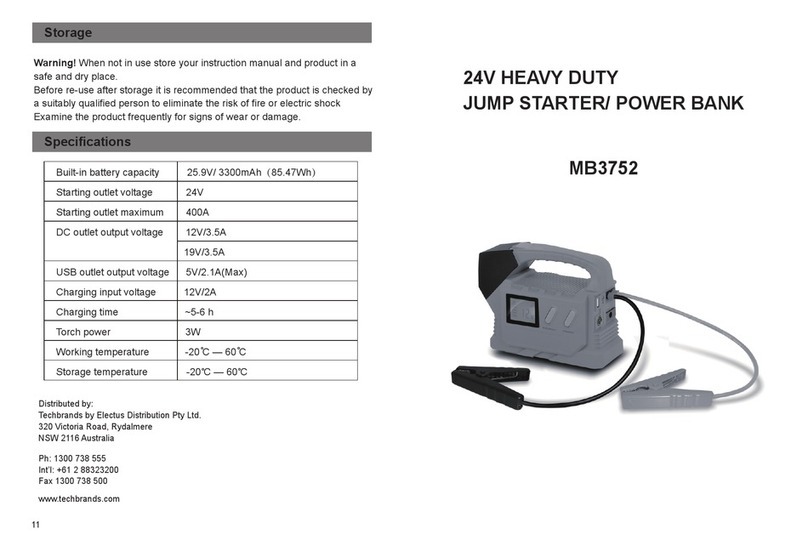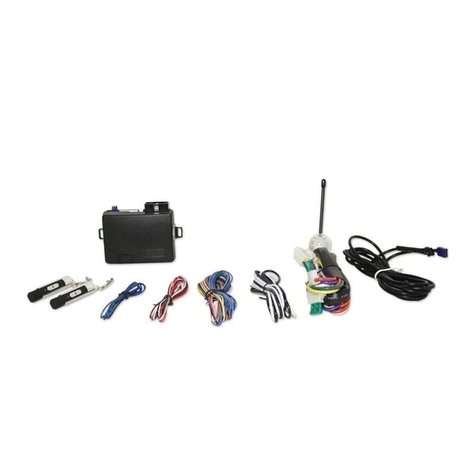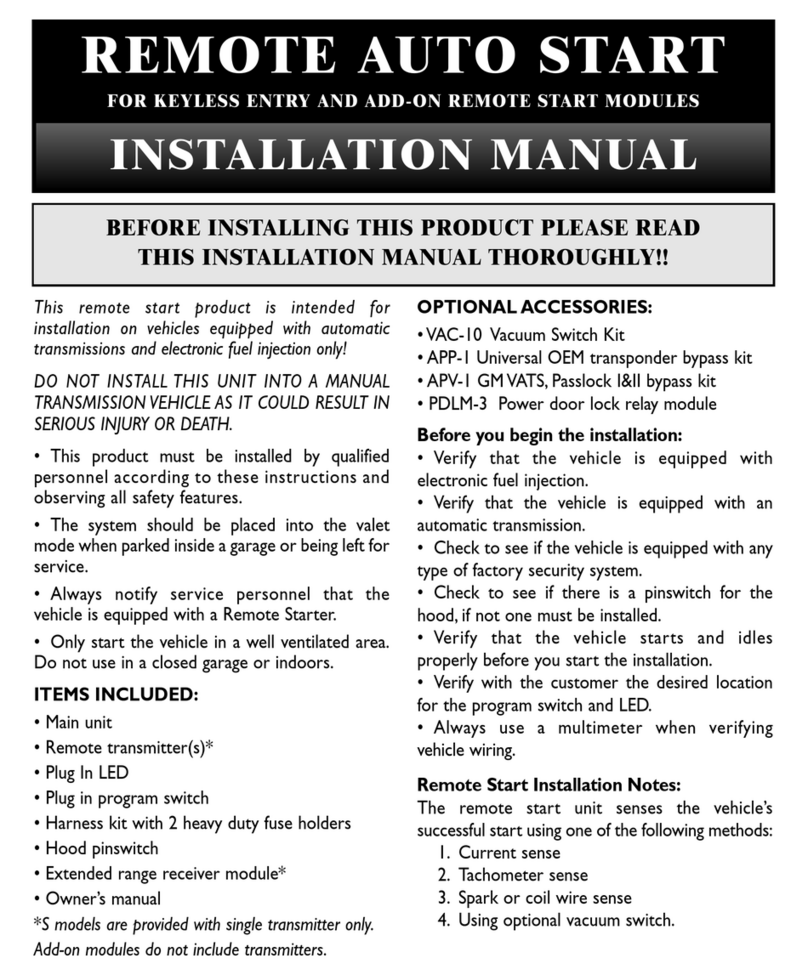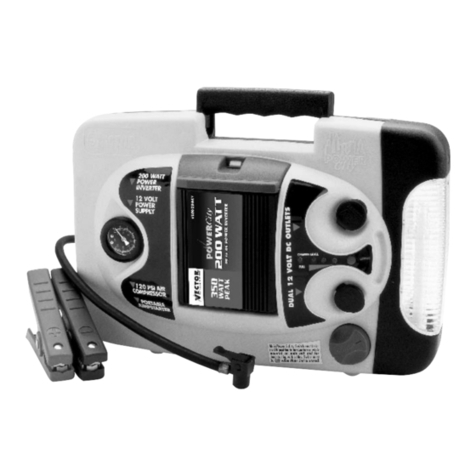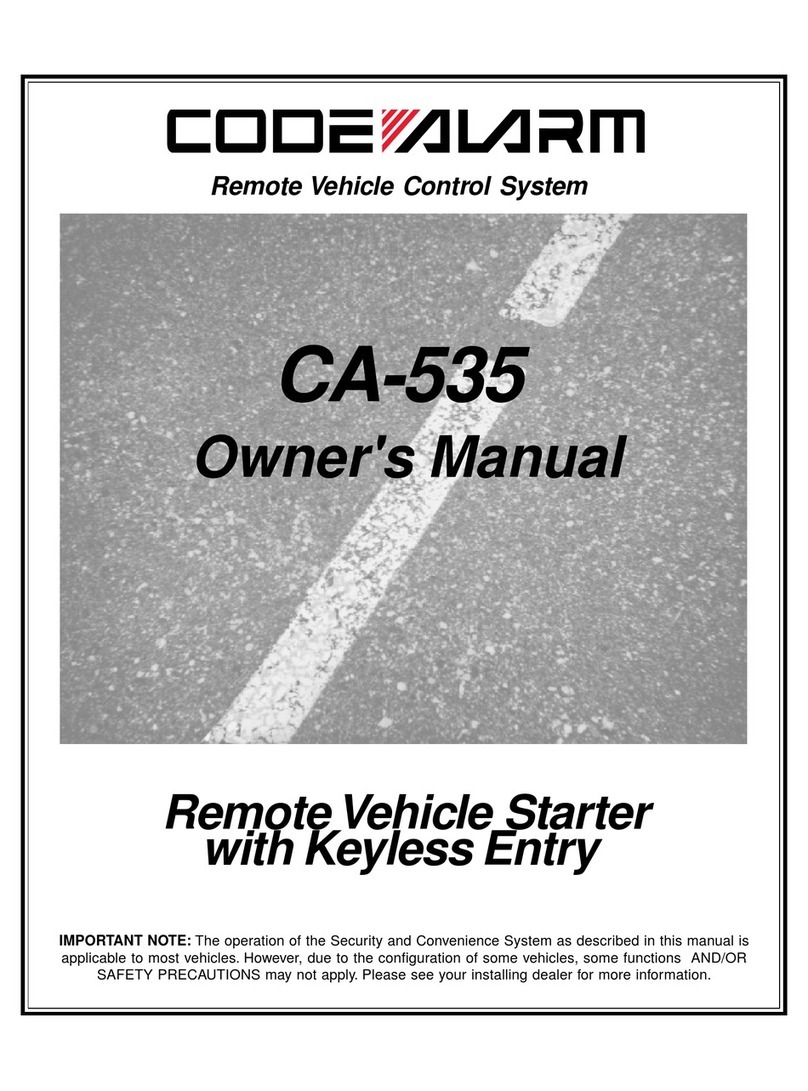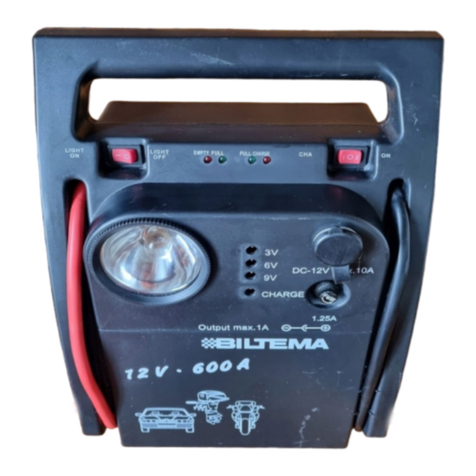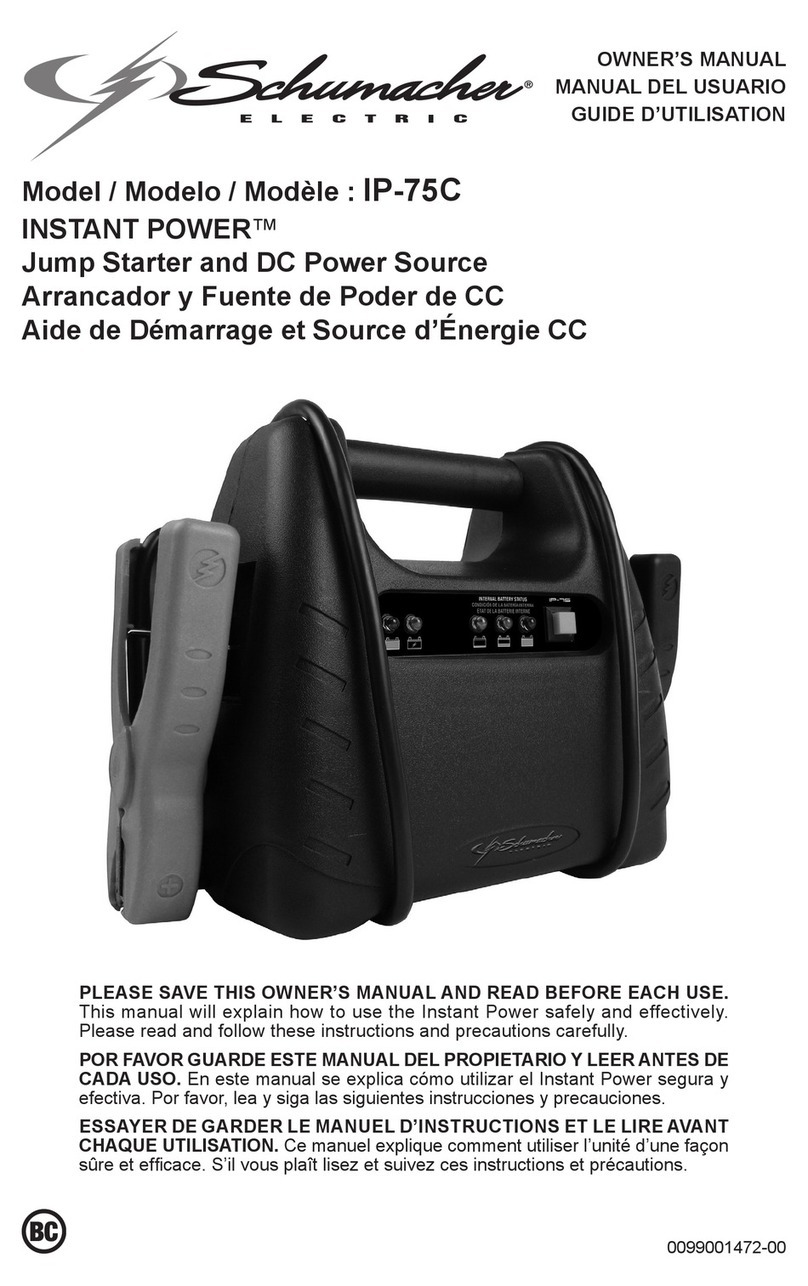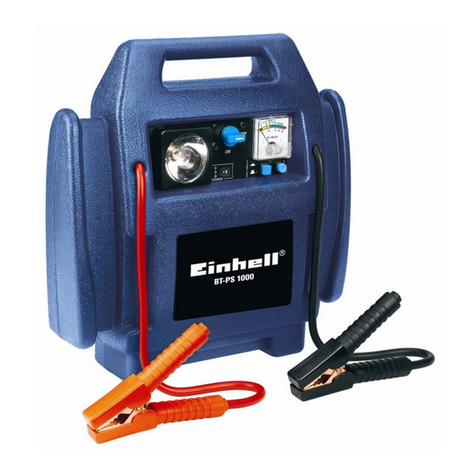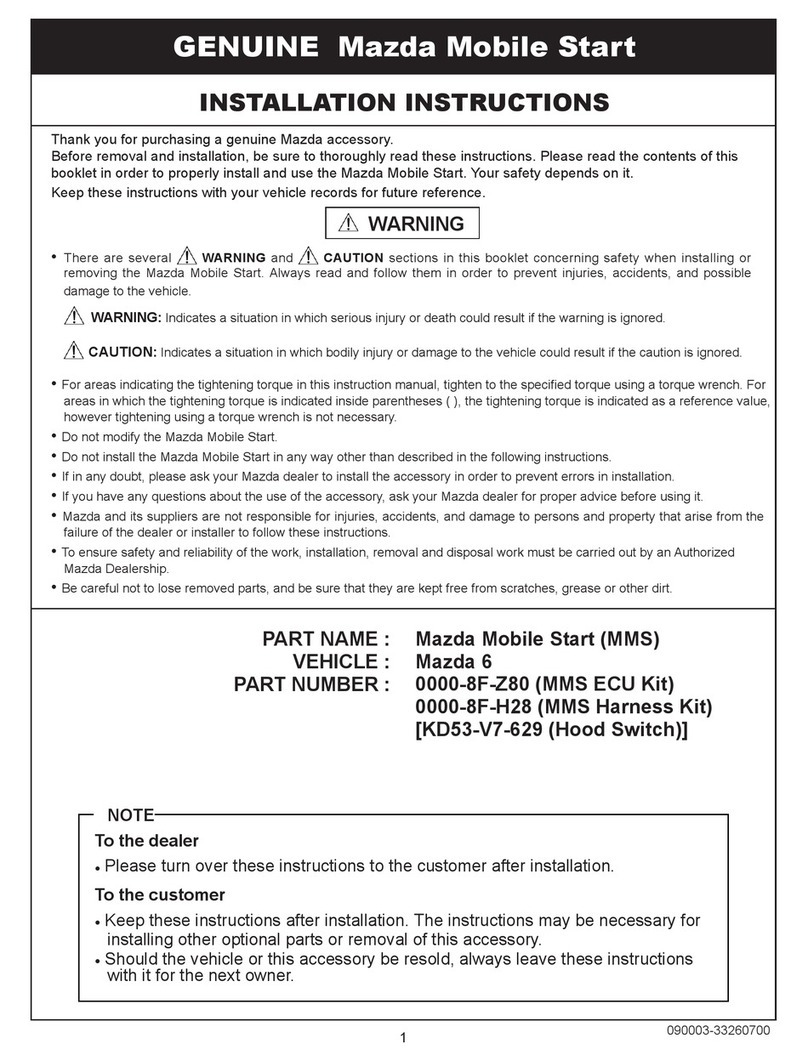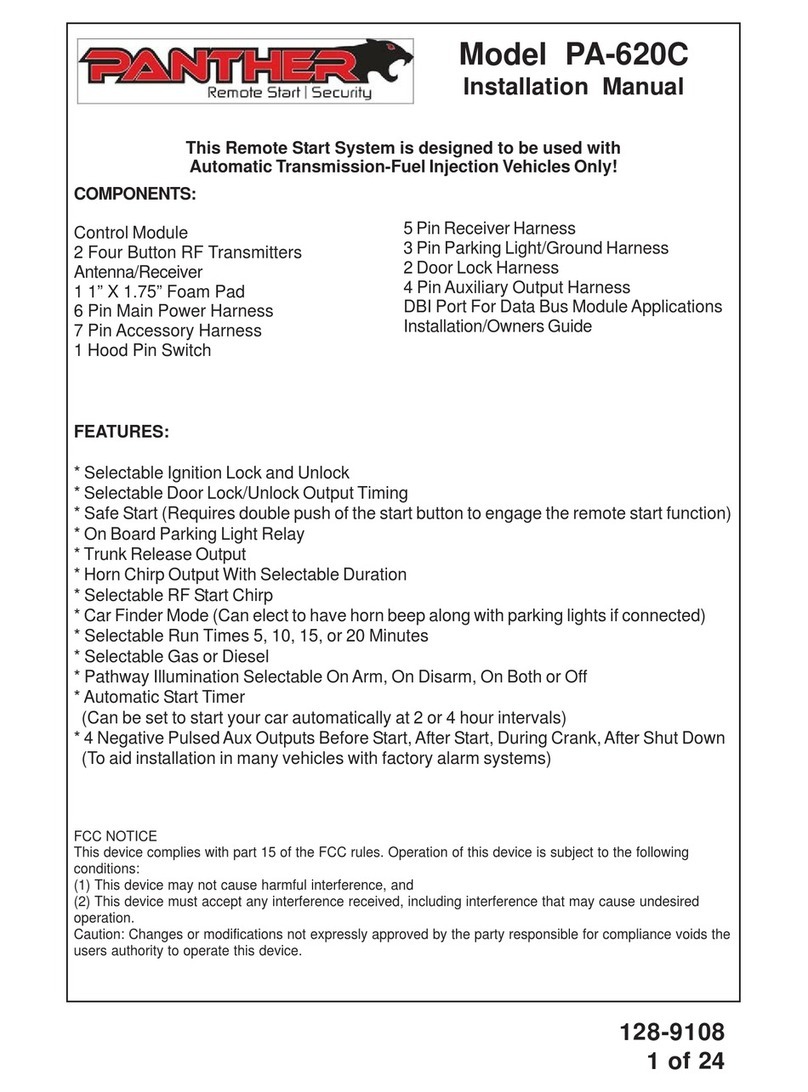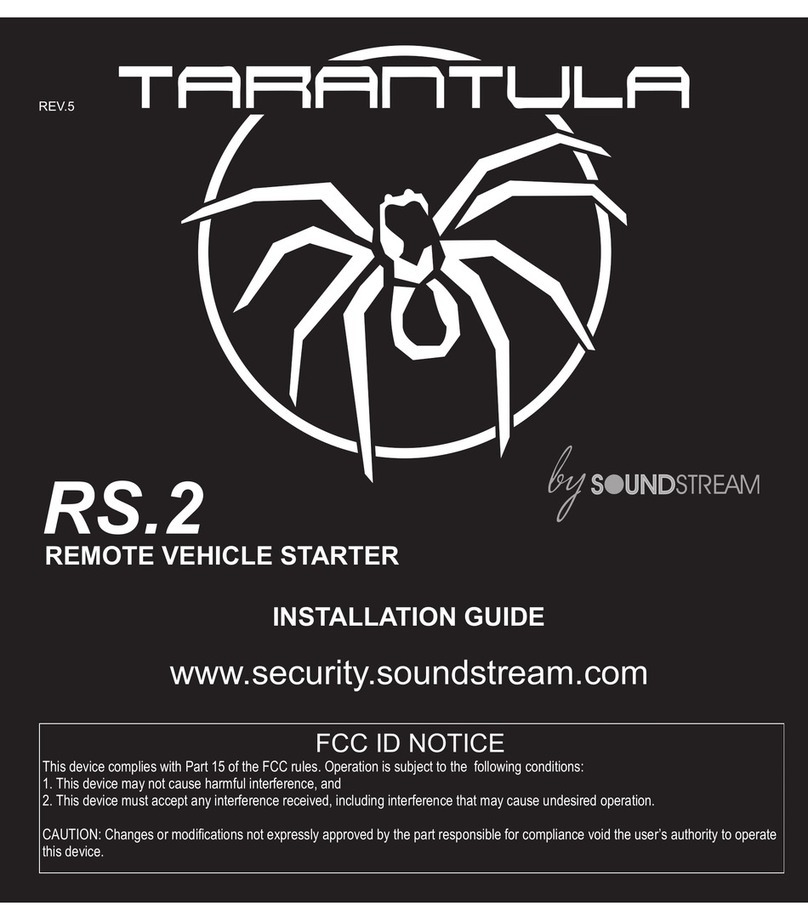
128-9239
2 of 24
Page 2
INSTALLATION OFTHE MAJOR COMPONENTS:
CONTROLMODULE: (P/N1365346)
Selectamountinglocationinsidethepassengercompartment(upbehindthedash-
board). The mounting location selected must be within 24" of the ignition switch wiring
harness to allow connection of the 6 pin main wiring harness.
Becertainthatthechosenlocationwillnotinterferewithproperoperationofthevehicle.
Avoidmountingthemoduletoorroutingthewiringaroundthesteeringshaft/column,as
themoduleorwiringmay wrap around or blockthesteeringwheelpreventingproper
control of the vehicle. Secure the module in the chosen location using cable ties or
screws as necessary.
Do Not Mount The Module In The Engine Compartment, as it is not waterproof.
THERECEIVER/ANTENNAVALETSWITCH LEDASSEMBLY:(P/N1181246)
TheSuperheterodyneReceiverAntennaAssemblywhich includestheLEDandValet/Pro-
grammingswitchprovided with thisunitallowsroutingfrom belowthedashboardfor maxi-
mumoperatingrange.Choosea location above the beltline(dashboard)ofthevehiclefor
bestreception.Special considerationsmustbemadeforwindshieldglassassome newer
vehiclesutilizeametallicshieldedwindowglassthatwillinhibitorrestrictRF reception. In
thesevehicles,route the antennatowardarearwindow location forbestreception.Secure
the antenna with double stick tape provided. After securing the antenna with tape, we
advisealsosecuringa section of theantennacabletoafixed support. Thiswillpreventthe
antenna from dropping down in case the double stick tape is exposed to extreme heat
which may loosen its gummed surface. Route the connector toward the control module
using caution not to pinch the cable as this will cause poor or no RF reception to the
control module. Connect the 5 pin cable to the mating connector of control module.
HOOD PIN SWITCH: (P/N 1363699)
The pin switch included in this package are intended for protecting the hood area of the
vehicle. In all cases, the switch must be mounted to a grounded metal surface. When the
pinswitchisactivated,(hood/trunkopen), itwill supply a ground to the input wiretoinhibit
the remote start function. In addition, the hood switch is required for the safety shut down
of the remote start unit. If the vehicle is being worked on, this hood switch prevents the
remote start activation even if the RF command to start is issued. This switch must be
installed in all applications. Failure to do so may result in personal injury or
property damage.
Mounttheswitch inthehoodlocations awayfromwaterdrain paths.Ifnecessary, abracket
may be used to move the switch away from rain gutters or allow mounting to the firewall
behindthehoodseal. In both casestheswitchmustbeset up to allowthehoodtodepress
the switch at least 1/4 inch when the hood is closed and fully extended when the hood is
opened. For direct mounting, a 1/4 inch hole must be drilled. Carefully check behind the
chosenlocationtoinsure the drill willnotpenetrateanyexisting factory wiring orfluidlines.
Drill a 1/4" hole in the desired location and thread the pin switch into it using a 7/16" nut
driver or deep well socket. If using the mounting bracket, first secure the bracket to the
desiredlocationandsecurethepinswitchinthepre-threadedmountingbrackethole.
DO NOT PLUG THE SIX PIN MAIN POWER HARNESS OR THE MULTI PIN INPUT /
OUTPUTHARNESSINTOTHECONTROLMODULEUNTILALLCONNECTIONSTOTHE
VEHICLE HAVE BEEN MADE. AFTER SELECTING YOUR TARGET WIRES AS DE-
FINEDBELOW,DISCONNECTTHENEGATIVEBATTERYCABLEFROMTHE VEHICLE
BATTERYPRIOR TOMAKINGANYCONNECTIONS.
